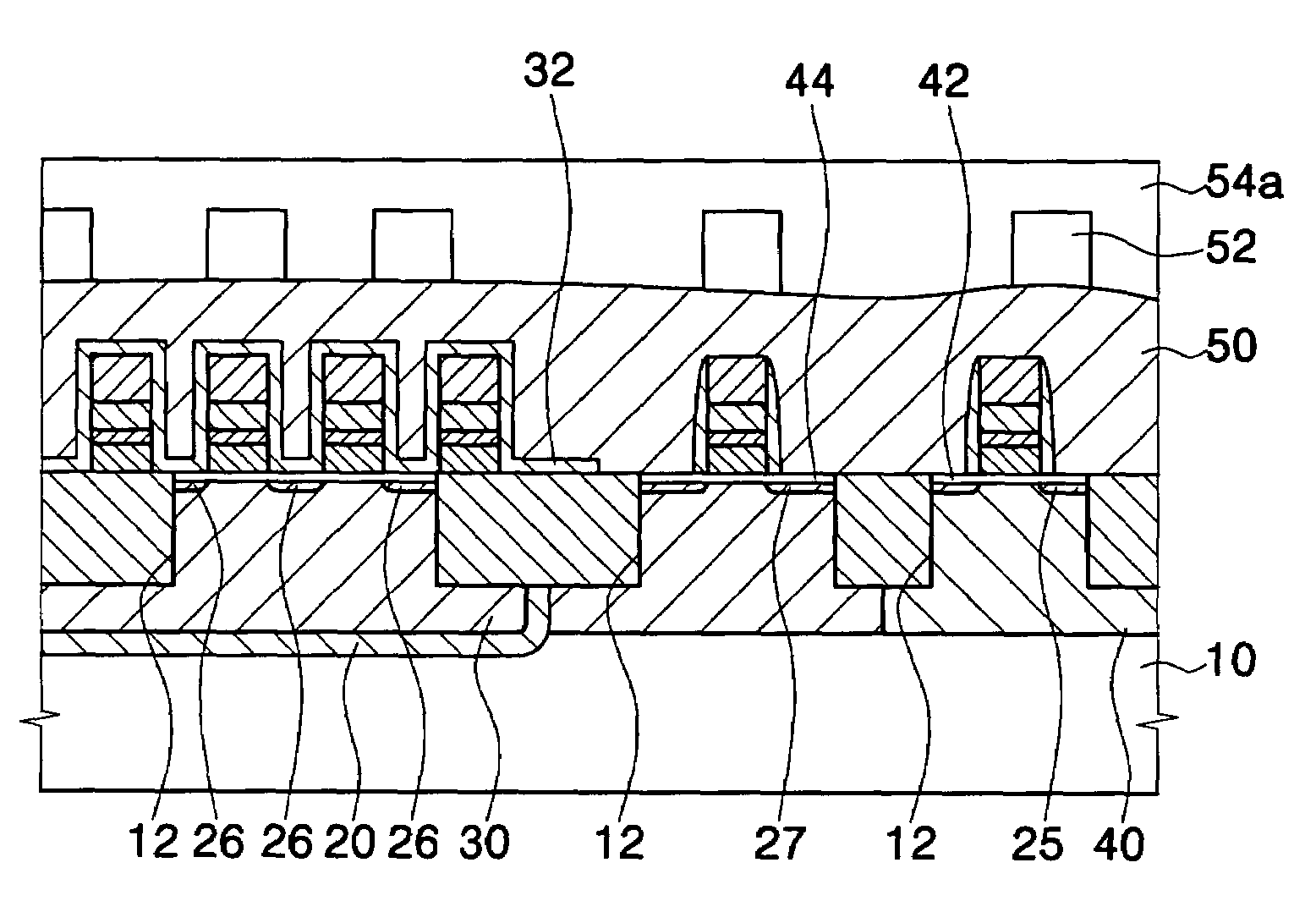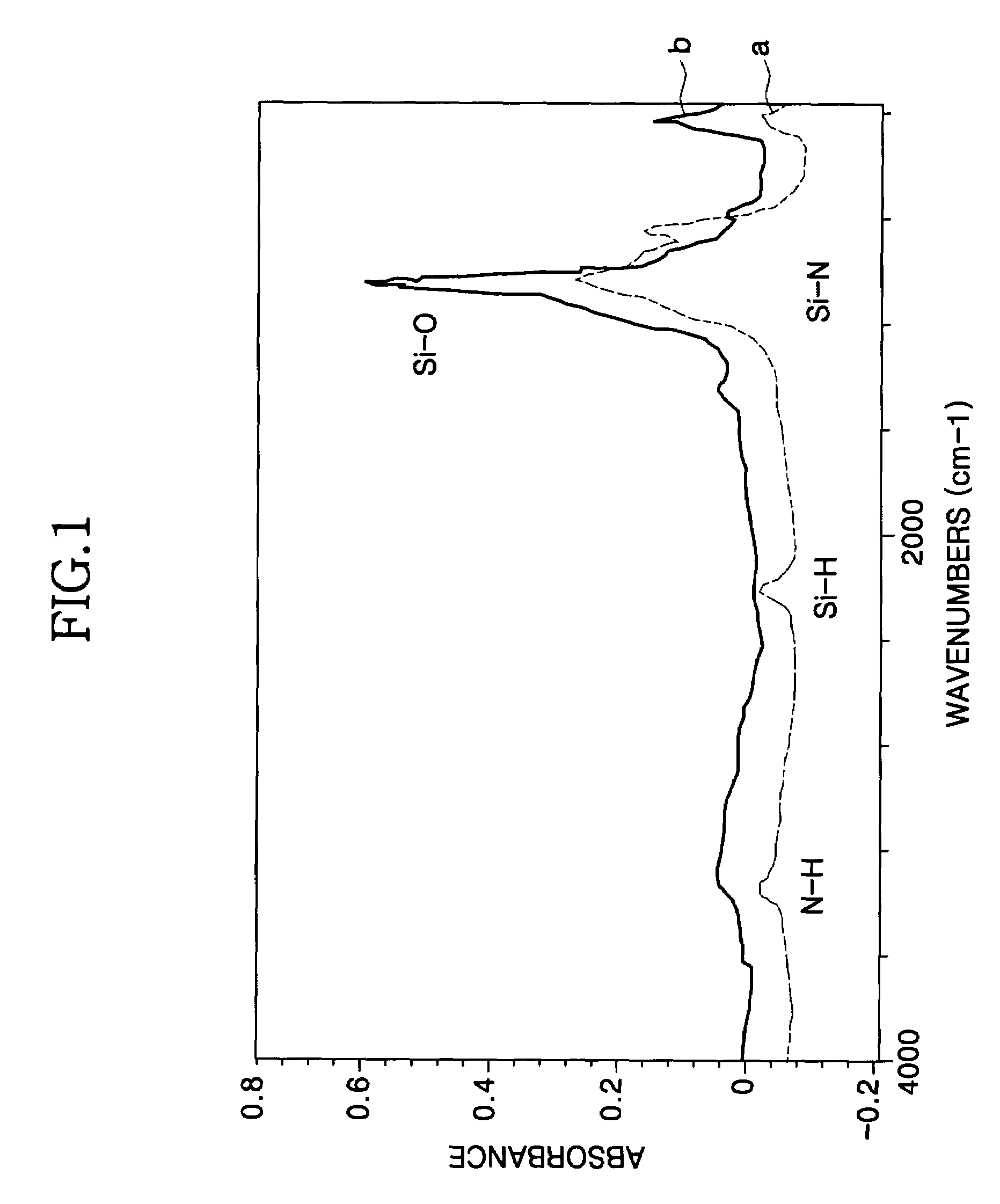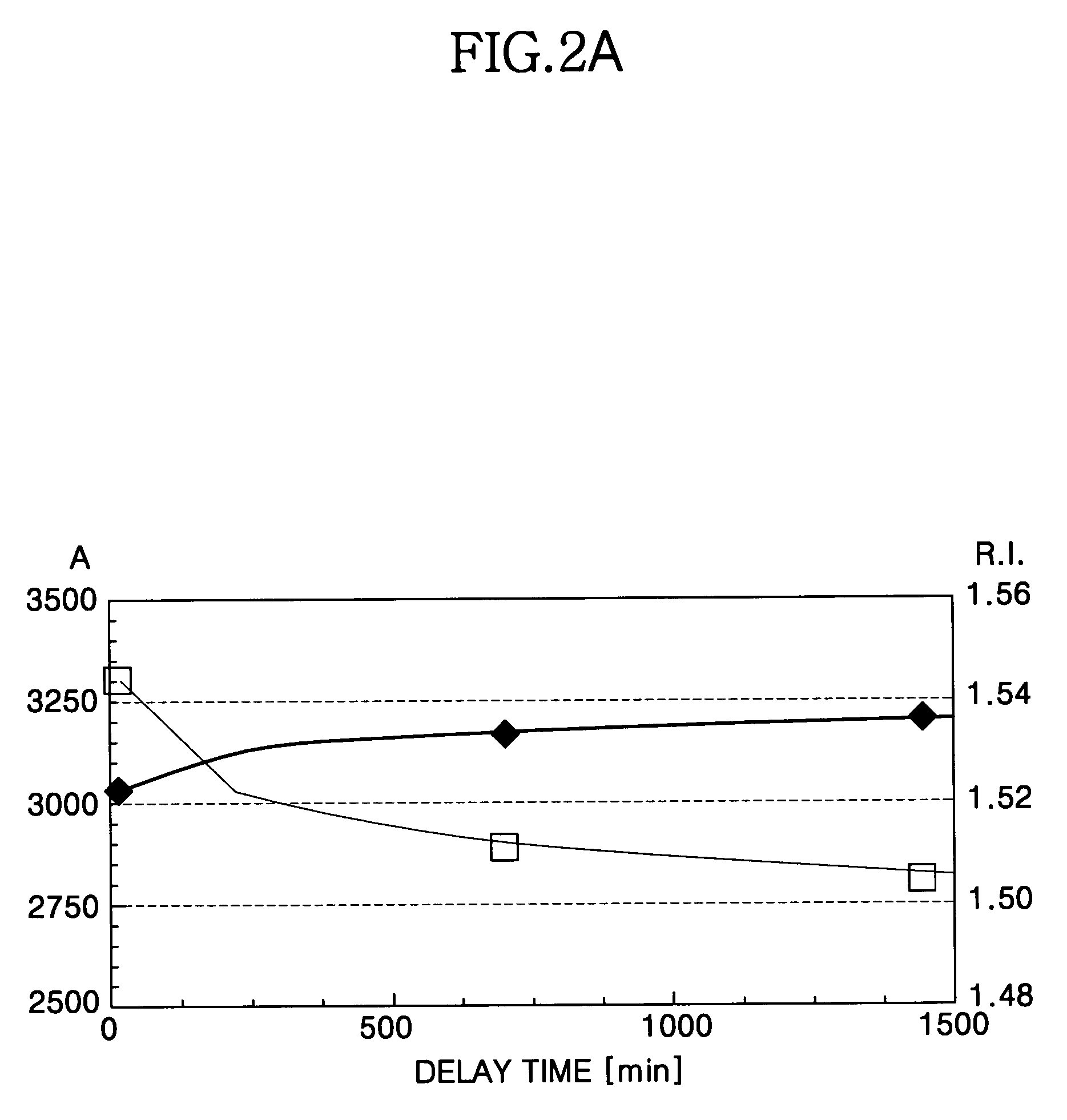Method for forming a silicon oxide layer using spin-on glass
a technology of silicon oxide and spin-on glass, which is applied in the direction of semiconductor/solid-state device manufacturing, basic electric elements, electric devices, etc., can solve the problems of uneven surface of the first insulating layer formed over those elements, metal layer may exhibit various defects, and uneven surface of the top layer
- Summary
- Abstract
- Description
- Claims
- Application Information
AI Technical Summary
Benefits of technology
Problems solved by technology
Method used
Image
Examples
experiment 1
[0067]A SOG composition including polysilazane according to an exemplary embodiment of the invention was spin coated onto a bare test wafer to form a SOG layer of about 3,400 Å. This SOG layer was then hard-baked at about 400° C. for about 30 minutes, and then cured by immersion in an oxidant solution according to an exemplary embodiment of the invention for about ten minutes, thereby substantially converting the SOG layer into a silicon oxide layer. After measuring the thickness of the resulting silicon oxide layer, the test wafers were wet etched for 20 seconds in a 25° C. aqueous solution of buffered oxide etchant (NH4F+HF buffered solution). The thickness of the remaining silicon oxide layer was then measured and subtracted from the initial measurement to determine the amount removed. The amount removed during the etch was determined to be about 1570 Å.
experiment 2
[0068]Test wafers having silicon oxide layers were prepared according to the procedure described above with regard to Experiment 1. The test wafers were then held under ambient conditions for one day after converting the SOG layer into the silicon oxide layer. After the hold period was completed, the test wafers were etched as described with regard to Experiment 1 and the amount removed during the etch was determined to be about 1530 Å.
experiment 3
[0069]Test wafers having silicon oxide layers were prepared according to the procedure described above with regard to Experiment 1. The test wafers were then held under ambient conditions for two days after converting the SOG layer into the silicon oxide layer. After the hold period was completed, the test wafers were etched as described with regard to Experiment 1 and the amount removed during the etch was determined to be about 1520 Å.
PUM
| Property | Measurement | Unit |
|---|---|---|
| temperature | aaaaa | aaaaa |
| temperature | aaaaa | aaaaa |
| temperature | aaaaa | aaaaa |
Abstract
Description
Claims
Application Information
 Login to View More
Login to View More - R&D
- Intellectual Property
- Life Sciences
- Materials
- Tech Scout
- Unparalleled Data Quality
- Higher Quality Content
- 60% Fewer Hallucinations
Browse by: Latest US Patents, China's latest patents, Technical Efficacy Thesaurus, Application Domain, Technology Topic, Popular Technical Reports.
© 2025 PatSnap. All rights reserved.Legal|Privacy policy|Modern Slavery Act Transparency Statement|Sitemap|About US| Contact US: help@patsnap.com



